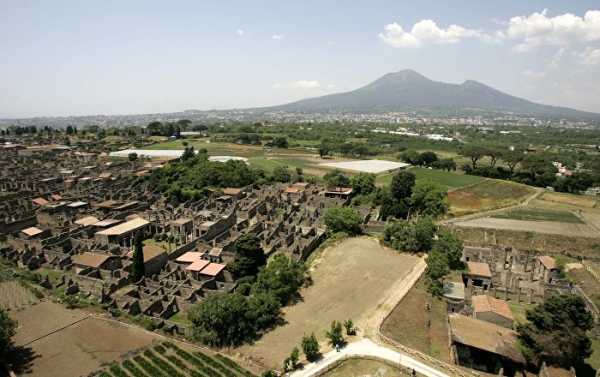
A previous study examined the skeletal remains of people in Herculaneum who had attempted to flee the Mount Vesuvius eruption, only to perish in the extreme heat generated by the volcanic blast, with their skulls bursting in the extreme heat.
Scientists made a grisly discovery when examining the remains of a man who died in Herculaneum after Mount Vesuvius erupted in the year 79.
The avalanche of gas and rock that spewed from the volcano had been hot enough not only to boil blood and vaporise flesh, but transformed bits of brain tissue into glass, according to a new study published on 22 January in the The New England Journal of Medicine.
The research, entitled “Heat-Induced Brain Vitrification from the Vesuvius Eruption in c.e. 79”, reveals that the onslaught of hot ash had scorched the victim’s brain to twisted black bits through a process called vitrification, with the glassy material “encrusting” the surface of the man’s skull.
The unusual discovery was made by Dr Pier Paolo Petrone, a professor of human osteobiology and forensic anthropology at the Federico II University Hospital in Naples, Italy.
While in previous studies, Petrone and his team examined remains of more than 300 people in Herculaneum who had died when fleeing to boathouses during the eruption of the volcano, on this occasion they pored over a Vesuvius victim who didn’t perish on the waterfront.
The corpse was found lying on a wooden bed in a building known as the Collegium Augustalium in the 1960s, buried within a mound of volcanic ash.

The plaster cast of a horse, discovered in an ancient stable outside Pompeii
Like in the case of the boathouse victims, the charred skeleton bore remnants of a skull that had burst.
The scientists were alerted to pieces of glassy black material lodged within the skull’s remnants and were prompted to examine them in detail.
Study co-author Piero Pucci of the Centro di Ingegneria Genetica-Biotecnologie Avanzate in Naples found that the proteins within the material matched those known to be found in different areas of the human brain.
Pucci also spotted fatty acids typical for human hair grease, and triglycerides commonly found in brain tissue samples.
Herculaneum sits closer to the base of Vesuvius, about 11 miles (20 kilometres) from the ancient Roman city of Pompeii, destroyed when Vesuvius erupted and covering it in at least 19 feet of ash and volcanic debris. The city’s quick burial preserved it for centuries before its ruins were discovered in the late 16th century, making it one of the world’s most famous – and fascinating – archaeological sites.

Roman fresco with a banquet scene from the Casa dei Casti Amanti, Pompeii
Herculaneum’s proximity to the volcano meant its residents met a particularly gruesome fate as the steam from their boiling blood built up a level of pressure in their skulls that caused their heads to explode.
As they analysed the charred wood found near the corpse, the scientists suggested the temperature in the room at the time of the eruption had reached a maximum temperature of 968 degrees Fahrenheit (520 degrees Celsius).
The horrific heat would have “vaporised soft tissues” in the victim’s body and burnt all fat in the body.
Afterwards, the body would have rapidly cooled, leaving behind the remains of an exploded skull with vitrified brain bits as a ghastly reminder of the tragedy that struck this part of the world and has since offered a fascinating field for studies for generations.
Sourse: sputniknews.com






